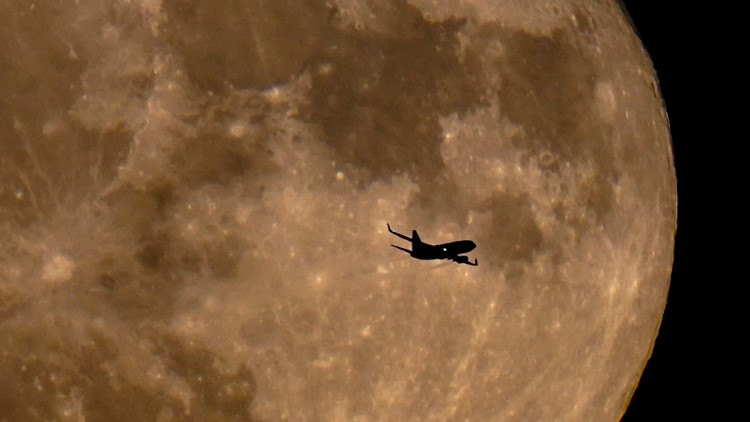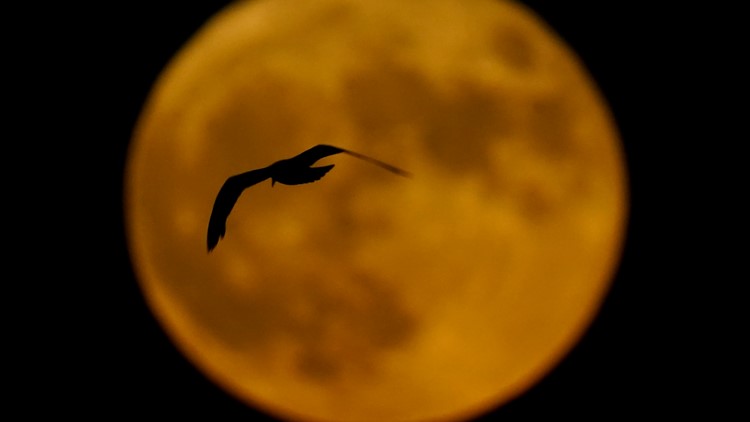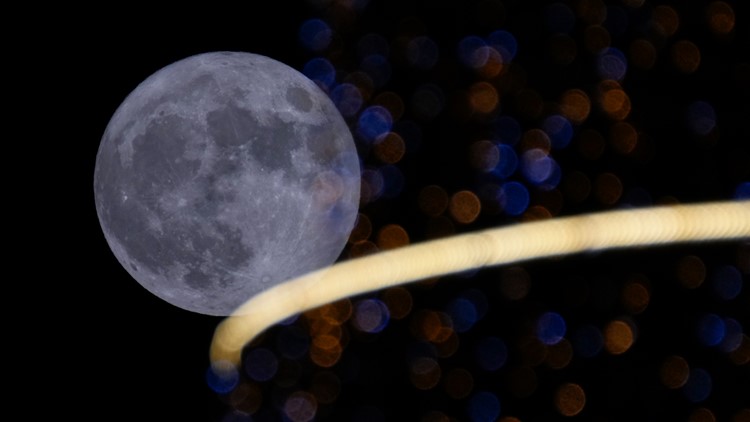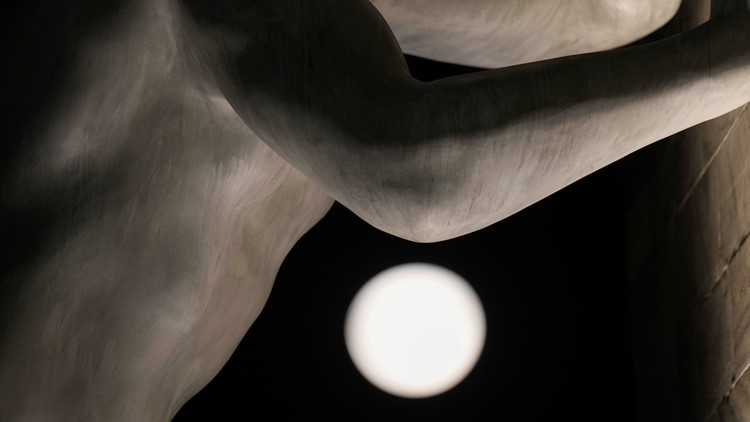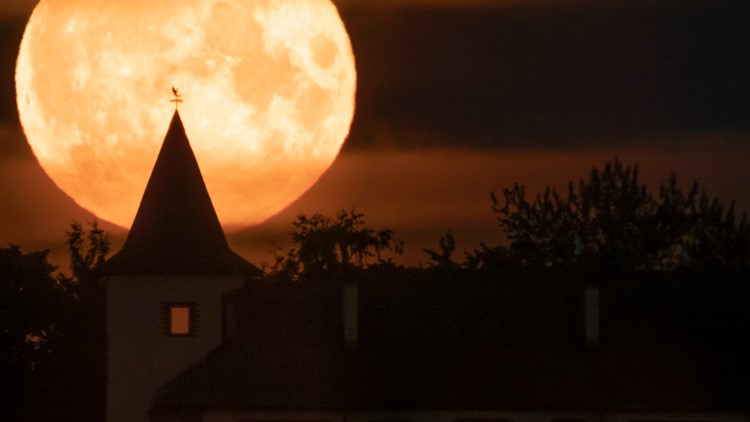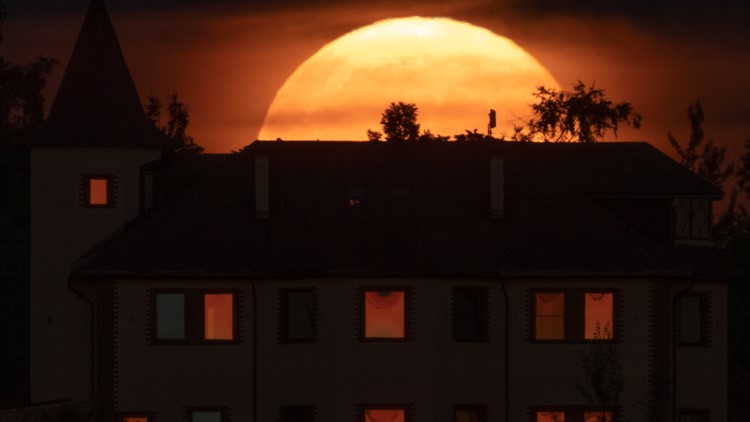WASHINGTON — Did you catch the supermoon?
There was a full moon Wednesday night, July 13, and at the same time, the moon was closer to Earth than usual. That combo is called a supermoon.
The closer proximity to Earth can make the moon appear slightly bigger and brighter, weather permitting.
One name for Wednesday’s full moon is the “Buck moon” — a reference to the time of year when new antlers are growing on male deer, or bucks.
The supermoon on June 14 was the “Strawberry moon” because it’s the full moon at strawberry harvest time.
What is a supermoon?
The moon's orbit around the earth is an ellipse, not a perfect circle. A full moon is considered a supermoon when it comes within 90% of perigee, its closest point to Earth. The perigee is about 226,000 miles from Earth — about 25,000 miles closer than the moon's furthest point.
According to NASA, the closest supermoons appear "about 17 percent bigger and 30 percent brighter" than the furthest, faintest moon of the year. That 17% isn't actually enough to make the moon look noticeably bigger, but NASA says supermoons are still a bit brighter than other full moons. They can also cause higher tides than usual due to their proximity to the Earth.
PHOTOS: Throwback to July 2022 supermoon
When is the next supermoon?
Only three or four supermoons happen each year, always in a series. July's supermoon was the biggest of the year and in case you missed it, there will be another next month. The August "Sturgeon Moon" reaches its peak on Thursday, Aug. 11.


